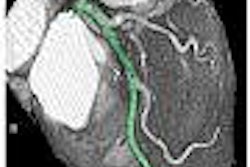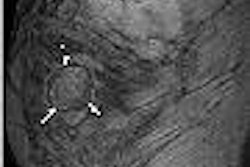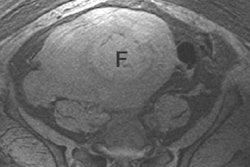Good news for patients, hospitals, and interventional radiologists: uterine fibroid embolization (UFE) is associated with less morbidity -- and lower costs -- than either hysterectomy or myomectomy, according to researchers from Jefferson Medical College at Thomas Jefferson University in Philadelphia.
"UFE is a same-day procedure, while hysterectomy and myomectomy, as open surgeries, both involve stays of more than one night," explained Dr. Anne Bussard in a presentation at the 2005 American College of Obstetricians and Gynecologists (ACOG) meeting in San Francisco. "Our analysis showed that hospitals lose money on the surgical treatments for fibroids and save money on UFEs."
To address the paucity of literature on the cost-effectiveness of the procedures, Bussard, who is a medical resident in ob/gyn, and colleagues compared the costs and reimbursements for the three different treatments.
They collected and analyzed data from their hospitals' decision support database. The review involved 540 women who had been treated for fibroids from 2000 to 2002. Among these patients, 299 underwent hysterectomy, 105 had a myomectomy, and 135 had undergone UFE.
The results showed that the average total hospital cost for UFE was $2,707. For hysterectomy, the average total cost was $5,707; for myomectomy, the average total cost was $5,676 (p < 0.05). When the investigators analyzed the hospital's reimbursement minus the total hospital cost, they found that the average net income was $57 per procedure.
For hysterectomies, the hospital lost an average of $572 per case, and for myomectomy the loss was an average of $715 per case (p < 0.05). The professional reimbursement averaged $1,306 per UFE, $979 per hysterectomy, and $1,078 per myomectomy.
Also, hysterectomy and myomectomy patients typically stayed approximately two days in the hospital, while UFE patients were discharged the same day.
The findings show that UFE has lower costs and greater hospital net income than either of the surgical procedures for treating uterine fibroids, Bussard said. Therefore, UFE constitutes less of a burden for patients, and makes better financial sense for the payor, the treating facility, and the overall health care system, she said.
By Paula Moyer
AuntMinnie.com staff writer
June 17, 2005
Related Reading
Fibroid recurrence common after uterine artery embolization, April 22, 2005
Digital flat-panel UFE guidance cuts skin radiation dose, April 6, 2005
Latest UFE studies show importance of both fibroid and particle size, April 5, 2004
Suture-mediated closure puts UAE patients back on their feet sooner, March 30, 2004
SIR study demonstrates UFE works well, offers speedy recovery, March 26, 2004
Copyright © 2005 AuntMinnie.com



















